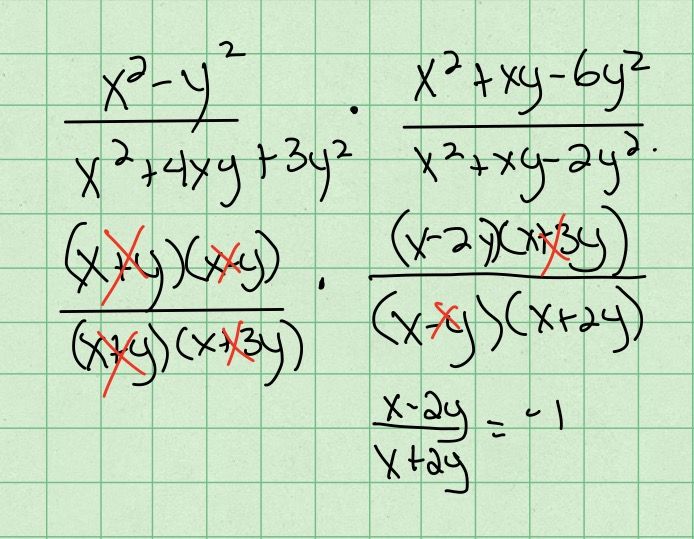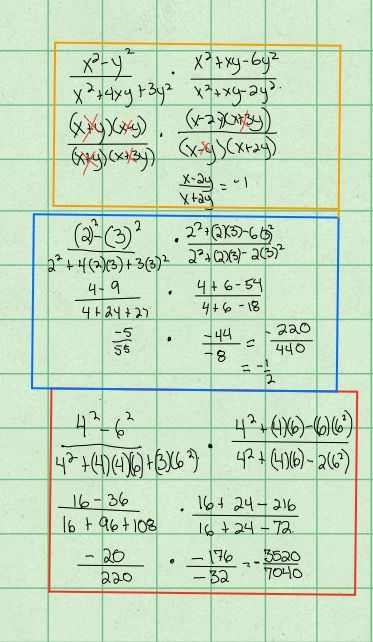Dirty.Rotten.Imbecile
New member
- Joined
- Jun 19, 2017
- Messages
- 21
What do you think about this one? The answer is dissatisfying, there's no way to test it and the text book has the incorrect answer in the solutions section.




Well, I tried that and found that the equation is equal to one half. I tried again using 4 and 6 I shoulda used two other numbers.YES there is:
assign a value to x and y, like x=2 and y=3;
original expression = simplified version?
You meant to type "negative one half", yes?I tried that and found that the equation is equal to one half.
Actually, you ought to have used a pair of xy-values such that the ratio y/x is not proportional to 3/2. But, you didn't realize that.I tried again using 4 and 6 I shoulda used two other numbers.
You meant to type "negative one half", yes?
Actually, you ought to have used a pair of xy-values such that the ratio y/x is not proportional to 3/2. But, you didn't realize that.
Your work is correct, except for the last step.
The given product simplifies to (x - 2y)/(x + 2y).
In your last step, you concluded that this expression equals -1. That was a false assumption.
Perhaps, you focused on just -(2y)/(2y) and saw "-1". It doesn't work that way because adding x affects the value of both the numerator and the denominator. (Remember the Order of Operations.) That is, after adding x on top and bottom, there is no more "-2y/2y".
It can be shown that (x - 2y)/(x + 2y) = -1/2 whenever the ratio y/x = 3/2.
Denis suggested x=2 and y=3; then you coincidentally picked x=4 and y=6 -- another pair where y/x=3/2. A lesson here is: always conduct a variety of trials, before drawing a conclusion. :cool:
The answer to your exercise is simply (x - 2y)/(x + 2y).
You may cancel identical objects in the numerator and denominator IF they are both factors.When I have a rational expression in which the same value appears in both numerator and denominator I'm not supposed to cancel it out ...
Gotcha! Thanks. You are an officer and a gentlemen.?You may cancel identical objects in the numerator and denominator IF they are both factors.
In the expression (x - 2y)/(x + 2y), the symbol x is not a factor; it's an addend.
Factors would look something like this:
x(-2y)/[x(2y)] = -1
New question split to new thread.PS: In the future, please start new threads for new exercises. Thanks. :cool:
